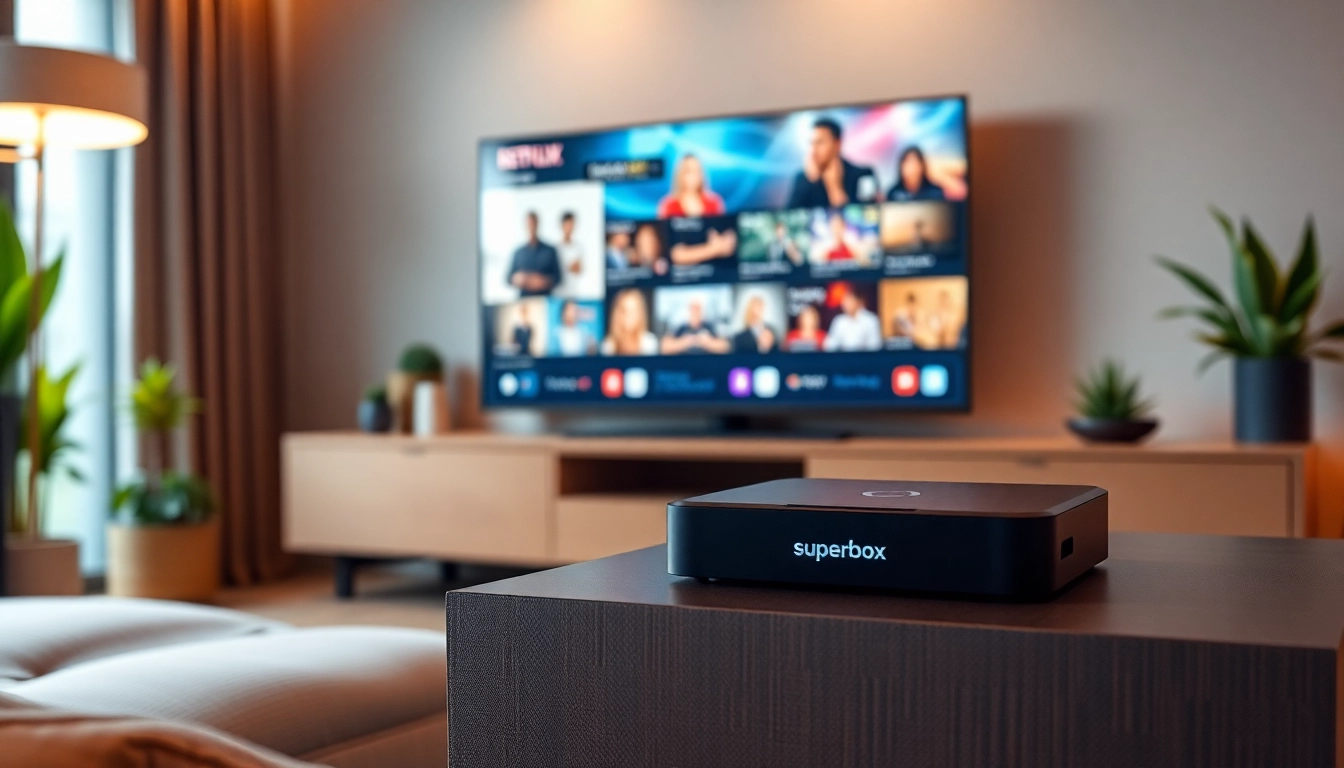Understanding PC Cases: The Essential Guide
When embarking on the journey to build your own computer, selecting the right PC CASE Supplier becomes paramount. The computer case, or chassis, serves as the foundation for your build, housing all crucial components while influencing both aesthetics and functionality. In this comprehensive guide, we delve into the intricacies of PC cases, exploring their various types, key features, and the critical factors involved in selecting a reliable supplier.
What is a PC Case?
A PC case is an enclosure that houses most of the essential components of a computer system. This includes the motherboard, power supply, storage drives, and cooling systems. Beyond this functional role, PC cases also contribute to the overall aesthetic appeal of a build, allowing users to express their personality and preferences. Additionally, modern PC cases are designed to optimize airflow and cooling, essential for maintaining the performance and longevity of the components within.
Types of PC Cases: From Mini Towers to Super Towers
The diversity of PC cases available on the market caters to various needs and preferences, categorized primarily by size and form factor:
- Mini Tower Cases: These compact cases are perfect for small builds and setups, often accommodating micro-ATX motherboards and providing limited expansion options.
- Mid Tower Cases: A popular choice for many builders, mid towers strike a balance between size and expandability. They typically support ATX motherboards and provide ample space for multiple drives and cooling solutions.
- Full Tower Cases: Designed for high-performance gaming setups or workstations, full towers offer extensive space for a large number of components, including multiple GPUs, extensive cooling configurations, and various storage solutions.
- Super Tower Cases: These are the largest in the market, developed for users seeking maximum expandability. Super towers can house multiple motherboards, serve as server cases, and support a large custom cooling system.
- Cube Cases: Offering a unique design, cube cases provide an unconventional layout that can support a variety of component configurations, often prioritizing visual appeal alongside usability.
Importance of Choosing the Right PC Case
The choice of PC case is vital for numerous reasons. Firstly, it directly affects the cooling capabilities of your setup. Insufficient airflow can lead to overheating, impacting performance and durability. Additionally, a suitable case enhances accessibility during upgrades or maintenance, allowing easier access to components. Lastly, the right case can set the aesthetic tone of the entire system, making it visually appealing and aligning with the user’s personal style.
Key Features of PC Cases
Cooling Options: Airflow and Aesthetics
Effective cooling is crucial for any PC build, especially for high-performance systems. When selecting a case, consider the following cooling options:
- Airflow Design: Look for cases with intakes and exhaust fans strategically positioned to maximize airflow. Mesh panels often enhance airflow, making them a popular choice for gaming builds.
- Fan Compatibility: Ensure the case supports various fan sizes and configurations. Many cases can accommodate multiple 120mm or 140mm fans, enhancing cooling capacity.
- Water Cooling Support: If you are planning on a custom water-cooling setup, check the compatibility and space for radiators. Some cases come with pre-drilled holes for water-cooling tubes.
Material Choices: Steel, Aluminum, and Tempered Glass
The materials used in constructing a PC case significantly affect durability, weight, and appearance:
- Steel: Steel is a widely used material due to its strength and cost-effectiveness. While heavier, it provides a solid structure that can withstand numerous components.
- Aluminum: Lighter than steel, aluminum cases are often used in more premium builds. They offer a sleek design and better thermal performance.
- Tempered Glass: Many modern cases feature tempered glass panels for added aesthetics. These allow users to showcase their components and lighting setups but may require regular cleaning to maintain their appearance.
Size Matters: Form Factors Explained
The form factor of the PC case defines its compatibility with motherboards and components. Here are the most common form factors:
- ATX: The most standard motherboard size, ATX cases accommodate full-sized ATX motherboards and provide extensive space and expansion options.
- Micro-ATX: These cases serve motherboards that are slightly smaller than ATX, offering fewer expansion slots but are ideal for budget builds.
- Mini-ITX: Designed for compact systems, Mini-ITX cases are perfect for small builds, especially for users needing portability.
Choosing the Right PC CASE Supplier
Criteria for Selecting a Trusted Supplier
Choosing a reliable PC case supplier is crucial for ensuring quality and value. When evaluating suppliers, consider the following criteria:
- Reputation: Investigate the supplier’s market presence and reputation for quality. Brands with consistent positive reviews are generally safer options.
- Product Range: A diverse range of products indicates a supplier’s adaptability to market demands and consumer preferences.
- Warranty and Support: Look for suppliers that offer solid warranties and responsive customer support to address any issues that may arise.
Comparing Popular Brands in the Market
The PC case market is saturated with reputable brands, each offering unique features and designs:
- Corsair: Renowned for their innovative designs and cooling solutions, Corsair cases cater to both gamers and professionals with premium build quality.
- Lian Li: Known for their high-end aluminum cases, Lian Li emphasizes aesthetics and build quality, appealing to enthusiasts focused on design.
- Thermaltake: Offering a broad range of options, Thermaltake is popular among gamers for their customizable designs and RGB lighting features.
- NZXT: This brand focuses on clean lines and modern aesthetics, providing a streamlined experience with integrated cable management and cooling options.
Customer Reviews and Feedback: Importance in Decision Making
When choosing a supplier, customer reviews play a pivotal role in the decision-making process. Positive reviews can indicate reliability, while negative feedback can highlight potential issues. Look for reviews that mention:
- Build quality and durability
- Ease of installation and design
- Customer service and warranty responsiveness
Using platforms like Reddit or niche forums can provide unfiltered insights into user experiences, helping refine your supplier choice.
Building Your PC: How to Install Components in Your Case
Step-by-Step Installation Guide for Beginners
Installing components into your case can be intimidating for beginners, but following a structured approach can ease the process. Below is a step-by-step guide:
- Preparation: Gather your components, tools (like screwdrivers), and anti-static wrist strap to prevent electrostatic discharge.
- Install Power Supply: Begin by mounting the power supply into the designated area, ensuring that the fan is oriented for optimal cooling.
- Mount the Motherboard: Carefully place the motherboard into the case, aligning the I/O shield and screw holes. Secure it using the appropriate screws.
- Install the CPU and Cooler: Install the CPU onto the motherboard and apply thermal paste before attaching the cooler.
- Add RAM: Insert the RAM sticks into the appropriate slots on the motherboard.
- Install Storage Drives: Place SSDs or HDDs into their bays, securing them with screws. Connect data and power cables accordingly.
- Connect GPU: Insert the graphics card into the PCIe slot and secure it with screws.
- Finalize Connections: Connect all necessary cables, managing them neatly to enhance airflow.
Troubleshooting Common Assembly Issues
Even with meticulous planning, assembly can sometimes involve unexpected challenges. Here are common issues and how to address them:
- Boot Issues: If the system doesn’t power on, check all connections, ensuring the power supply switch is turned on and that the power cable is securely connected to the motherboard.
- Overheating: If temperatures rise quickly, ensure fans are installed correctly and that airflow is unblocked by cables or obstructions.
- No Display: In case of a black screen, verify that the monitor is connected properly and that the GPU is seated correctly in the PCIe slot.
Best Practices for Cable Management
Effective cable management not only enhances the visual appeal of your build but also improves airflow. Here are some best practices for managing cables:
- Plan Your Routing: Determine the most efficient paths for cable routing before installation.
- Use Velcro Straps: These are reusable and can help bundle cables neatly, maintaining organization.
- Tuck Away Excess: Inside, position unused cables behind the motherboard tray or out of the airflow path.
Future Trends in PC Case Design
Innovative Cooling Solutions on the Horizon
The future of PC case design is leaning towards innovative cooling solutions, including:
- Hybrid Cooling Systems: Consolidating both air and water cooling technologies into one system to enhance cooling performance.
- Active Cooling Panels: Introduced in some high-end models, these panels can adjust ventilation based on component temperatures.
Smart Cases: Integrating Technology and Functionality
Smart cases are gaining traction, featuring built-in sensors and controls to monitor temperatures, fan speeds, and even RGB lighting through mobile apps.
Eco-Friendly Materials in PC Case Manufacturing
As environmental consciousness grows, manufacturers are exploring sustainable materials like recycled aluminum and biodegradable plastics to create more eco-friendly housing for PCs, reflecting a shift towards sustainability in tech.



